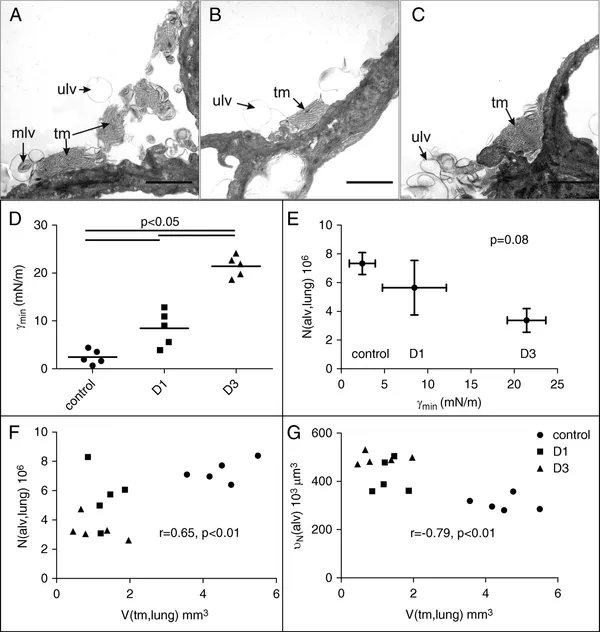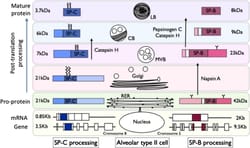Lutz, D., Gazdhar, A., Lopez-Rodriguez, E., Ruppert, C., Mahavadi, P., Günther, A., Klepetko, W., Bates, J.H., Smith, B., Geiser, T., Ochs, M., Knudsen, L.: Am J Resp Cell Mol. 2015;52(2):232-43.
To access the full article, click here:

Idiopathic pulmonary fibrosis (IPF) and bleomycin-induced pulmonary fibrosis are associated with surfactant system dysfunction, alveolar collapse (derecruitment), and collapse induration (irreversible collapse). These events play undefined roles in the loss of lung function. The purpose of this study was to quantify how surfactant inactivation, alveolar collapse, and collapse induration lead to degradation of lung function. Design-based stereology and invasive pulmonary function tests were performed 1, 3, 7, and 14 days after intratracheal bleomycin–instillation in rats. The number and size of open alveoli was correlated to mechanical properties. Active surfactant subtypes declined by Day 1, associated with a progressive alveolar derecruitment and a decrease in compliance. Alveolar epithelial damage was more pronounced in closed alveoli compared with ventilated alveoli. Collapse induration occurred on Day 7 and Day 14 as indicated by collapsed alveoli overgrown by a hyperplastic alveolar epithelium. This pathophysiology was also observed for the first time in human IPF lung explants. Before the onset of collapse induration, distal airspaces were easily recruited, and lung elastance could be kept low after recruitment by positive end-expiratory pressure (PEEP). At later time points, the recruitable fraction of the lung was reduced by collapse induration, causing elastance to be elevated at high levels of PEEP. Surfactant inactivation leading to alveolar collapse and subsequent collapse induration might be the primary pathway for the loss of alveoli in this animal model. Loss of alveoli is highly correlated with the degradation of lung function. Our ultrastructural observations suggest that collapse induration is important in human IPF.




